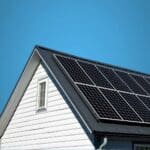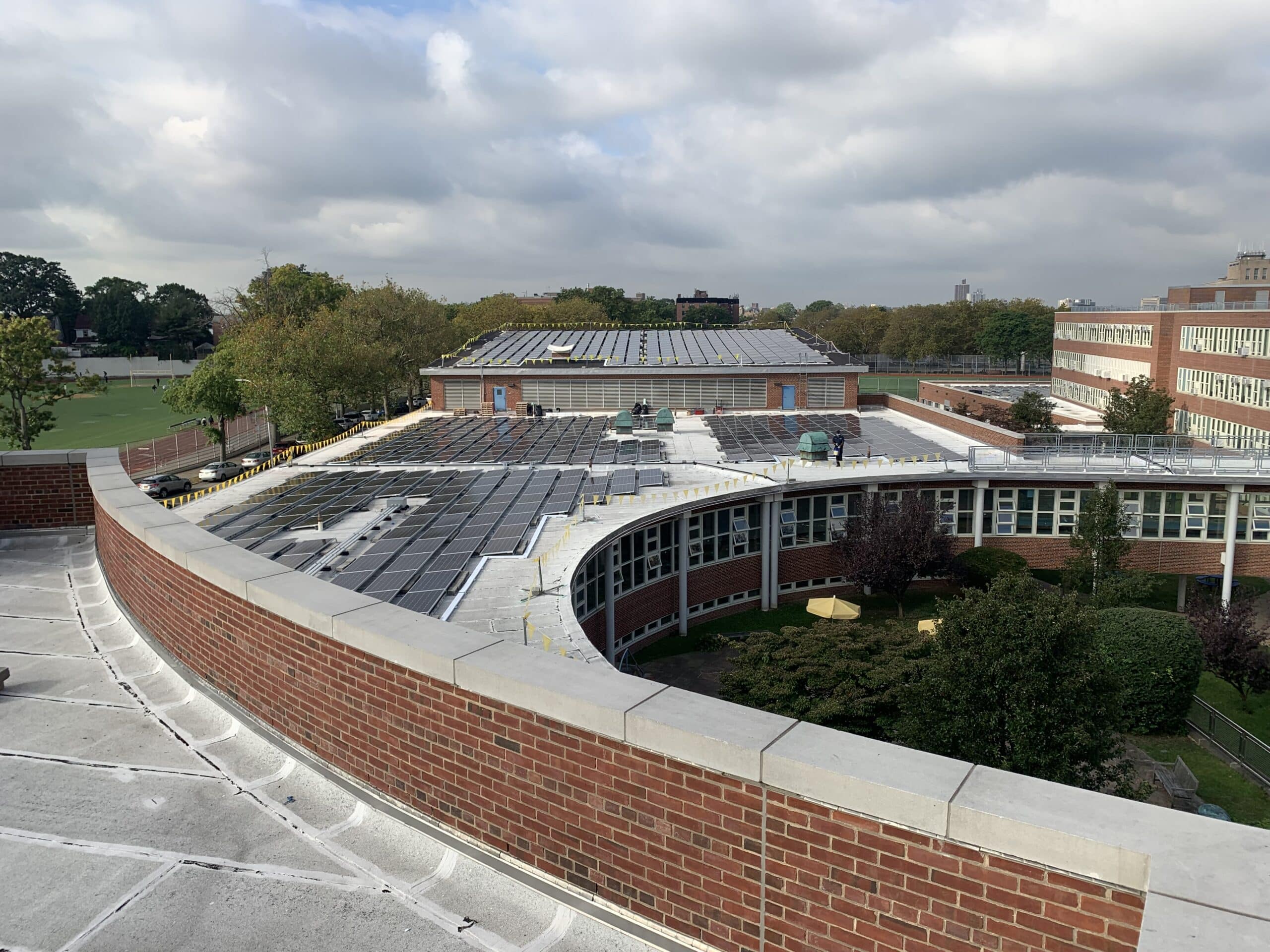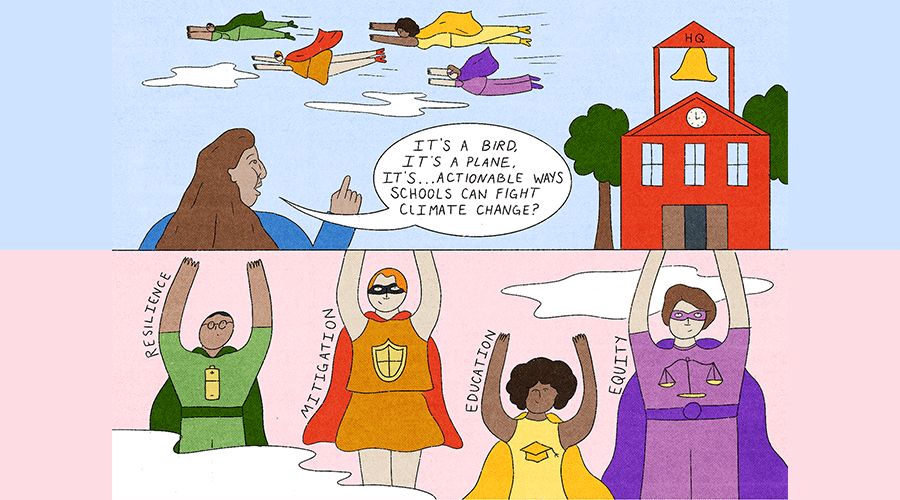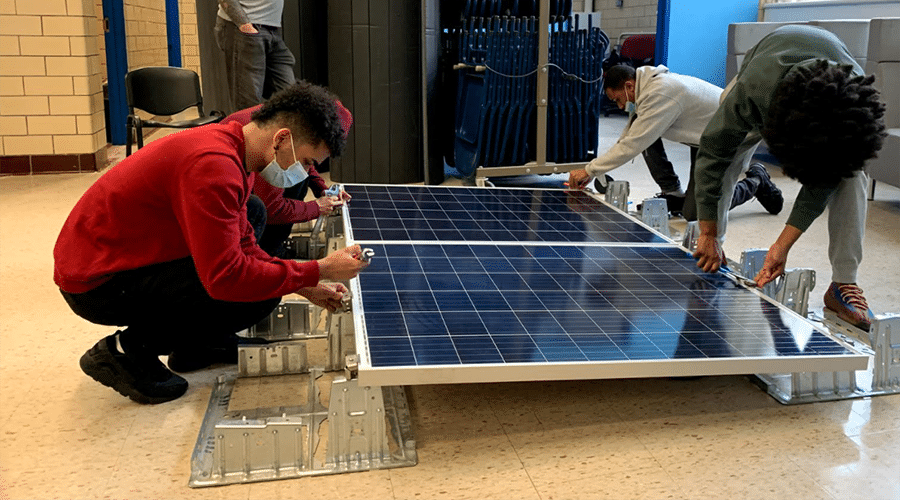As the largest school district in the country, serving over 1 million students and maintaining more than 1,800 school buildings, New York City Public Schools (NYCPS) has the potential to take climate action that impacts a generation of students and significantly reduces greenhouse gas emissions. This school system produces more solar power than all of the K-12 schools combined in 36 states in the country.
NYCPS has been at the forefront with its Climate + Energy Education Intensive, a comprehensive solar energy education program that starts in elementary school and offers solar career training and internships for high school students. NYCPS recently launched a new commitment to integrate climate education into public school classrooms across all subjects and grade levels. With progressive emission reduction goals, plans for building decarbonization, and youth and community leadership groups advising on climate action, NYCPS is leading the way in normalizing K-12 climate action.
We spoke with Meredith McDermott, NYCPS Director of Energy and Sustainability, who leads the district in embedding sustainability and climate action district-wide. She shared how NYCPS is working towards their climate goals and where she sees the biggest opportunities for change. Here is that interview, edited for length and clarity. Enjoy!
New York City Public Schools / New York City, NY
School District
- Nearly 1,000,000 students at 1,865 schools
Solar Energy Commitment
- 100 MW of solar power installed across city-owned buildings, including schools
Solar Installations
- 18 MW of solar power installed at 81 buildings, offsetting up to 60% of the district’s energy use
- 100+ more solar projects underway
- NYCPS produces more solar power than all of the K-12 schools combined in 36 states in the country.
Describe NYCPS’ climate action commitments and clean energy goals and what progress is being made towards them.
NYCPS is committed to meeting the goals established by NYC’s Local Law 97 under the Climate Mobilization Act, which aims to reduce greenhouse gas emissions of 40% by 2025, by 50% in 2030, and carbon neutrality by 2050.
In addition to the emissions reduction commitments from Local Law 97, New York City has set target to have 100 MW of solar power installed on city-owned buildings, including NYCPS K-12 school buildings, by 2025. Today, the school district has installed solar arrays on 81 school buildings, totaling nearly 18 MW of solar power, with over 100 more school buildings actively in the solar planning process. These school solar arrays make up nearly 80% of New York City’s total progress towards its onsite solar goal.
These school solar arrays make up nearly 80% of New York City’s total progress towards its onsite solar goal.
NYCPS also plans to reduce its energy usage by upgrading 800 school buildings with LED lighting and electrify the district’s building heating systems by converting 200 buildings to ultra-low sulfur biofuel. To identify and prioritize school buildings for decarbonization pathways equitably, the district is applying disadvantaged community metrics.
What are you most proud of that NYCPS is doing to address climate change?
So much! This is the fourth year of our Climate Education Leadership Team, which is composed of nearly 40 teachers across grade levels, subjects, and communities that support broad integration of climate education at all schools. The team has developed and evaluated lessons related to climate change education, implemented professional learning for NYCPS teachers to engage in climate education, and identified opportunities for climate content in alignment with local and New York State Standards.
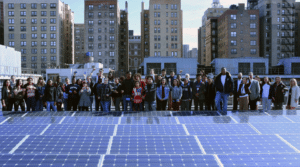
- Pictured: Youth Leadership Council students alongside an NYCPS rooftop solar array
We are also currently recruiting the sixth cohort of our Youth Leadership Council for high school students to advise, advocate, and provide leadership to their peers for climate action. Along with learning how to lead climate action in their schools and communities, the council members take sustainability-themed field trips around NYC, plan the 2024 Youth Climate Summit, and build a network of sustainability-minded students across all five boroughs.
Finally, we were able to successfully advocate for formal inclusion of climate education in NYC’s strategic climate plan (PlaNYC) for the first time, creating a platform for launching NYCPS’ Climate Action Days at all schools this year! During these climate action days, students in NYC’s public schools will engage in climate action through fun, creative learning opportunities. We’re offering a variety of targeted resources, professional learning programs, and technical training to support engagement for all stakeholders.
What are some of the biggest challenges you face in reducing greenhouse gas emissions in your district?
The average age of our school buildings is 70 years, and we have nearly 1,500 of them. The need for capital improvements and retrofits is vast. We also have many historic buildings that present challenges to modernizing systems and only 25-30% of existing rooftops are considered “solar-ready.” Many of the district’s clean energy and future electrification efforts will be dependent on capital funding.
Additionally, competition for space has emerged with various climate priorities. Rooftops are instrumental for solar, interest in developing green roofs is growing, and building electrification will result in more rooftop units. So, integrated planning and close coordination with agencies is essential to optimize the district’s priorities and progress towards climate goals.
Lastly, decarbonization measures are primarily focused on buildings, but the call for climate action must include the people who occupy them. Creating the pathways for engagement, finding resources to support, and including students and educators requires continuous engagement and broadening our scope of work on an ongoing basis.
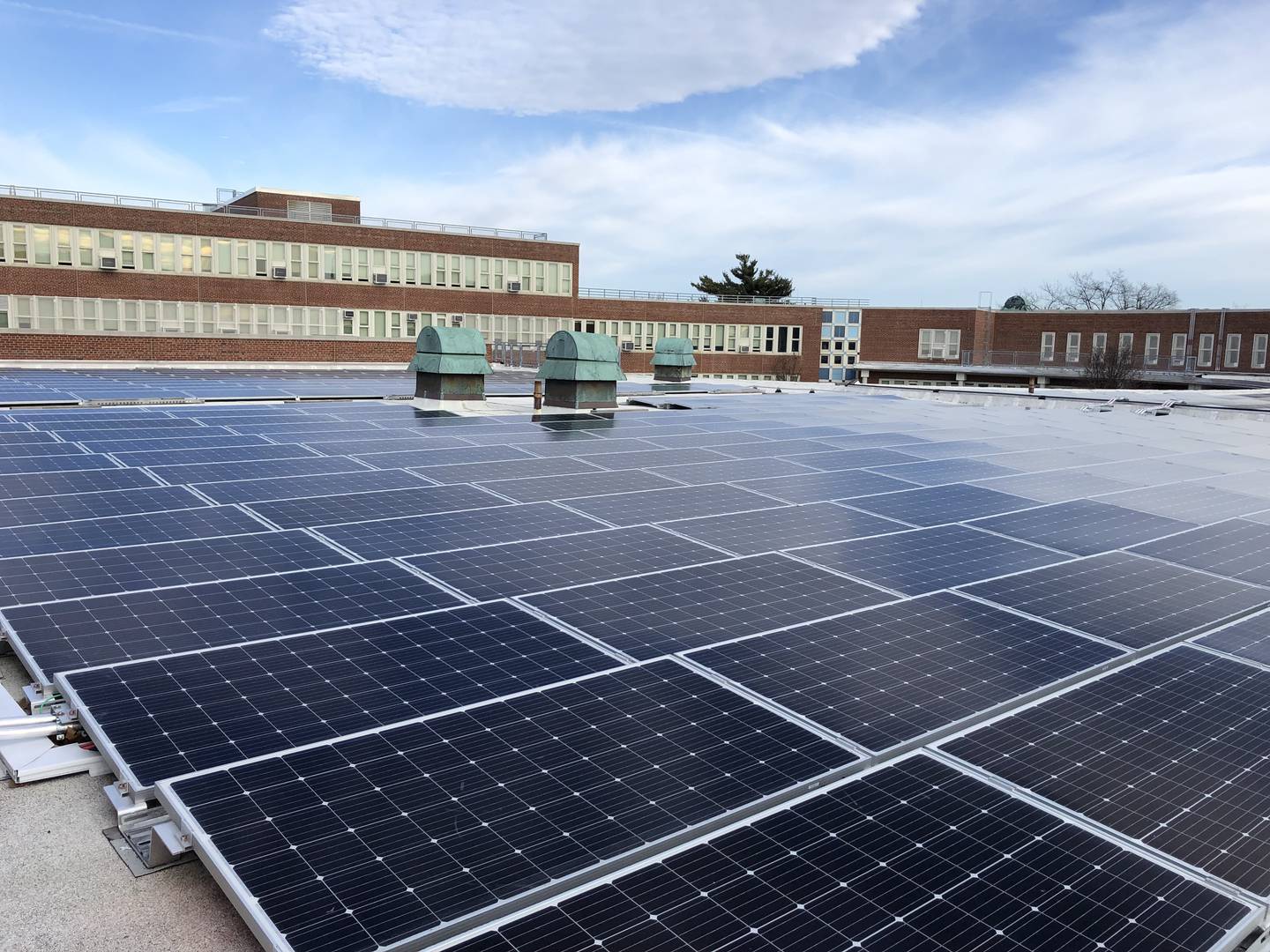
- Pictured: Rooftop solar array at Edwin High School, NYCPS
What do you see as the biggest opportunity in your role as Director of Energy and Sustainability for the largest school district in the country?
I see absolutely EVERYTHING as an opportunity! I am a big advocate for connecting climate and sustainability to educational priorities, plans, and policy. However, they often don’t have natural bridges to one another. That’s the significance of PlaNYC including goals beyond building infrastructure, like workforce development and climate education. We have a unique opportunity because we get to do sustainability work in schools FOR STUDENTS WITH TEACHERS IN COMMUNITIES.
Nothing is more motivating than the responsibility to never forget (or let others forget) that we must: decarbonize our buildings and operations to reduce emissions and environmental impact; connect with broader organizational leadership so sustainability is embedded in ALL core missions; and provide real opportunities to support all school stakeholders, not just select groups. We have to engage technical staff, admin, teachers, students, etc. in ways that are relevant and impactful to them. Developing young leaders as stewards and advocates, as well as preparing educators and building operators to take climate action in their roles, are areas where I believe we can make positive change.
Developing young leaders as stewards and advocates, as well as preparing educators and building operators to take climate action in their roles, are areas where I believe we can make positive change.






